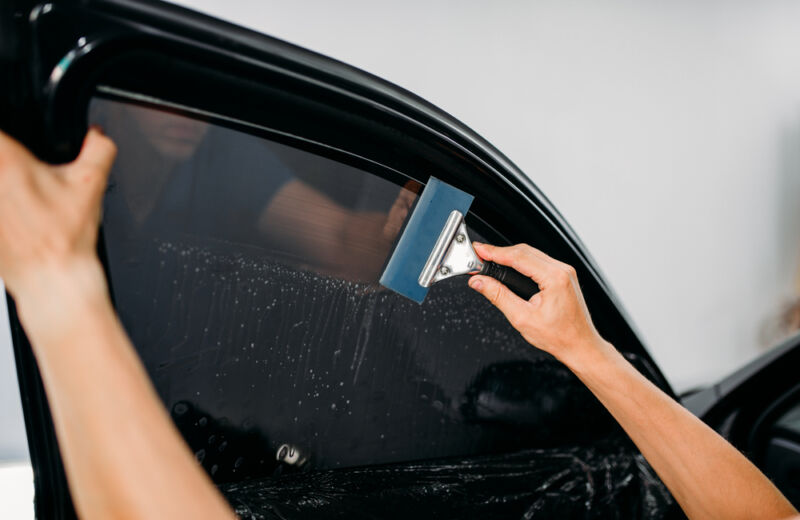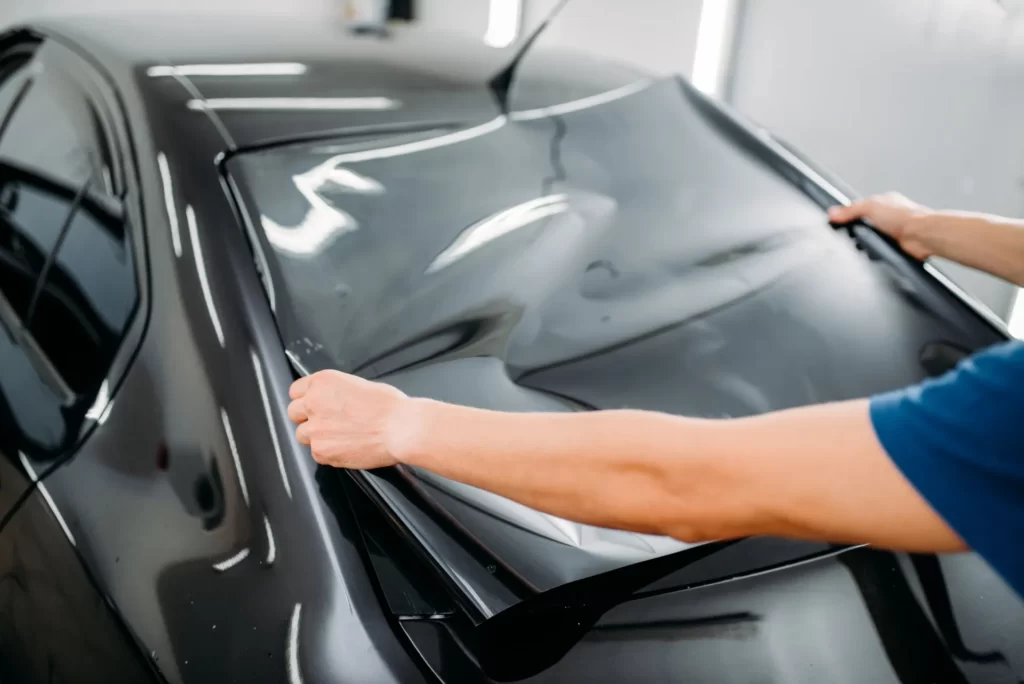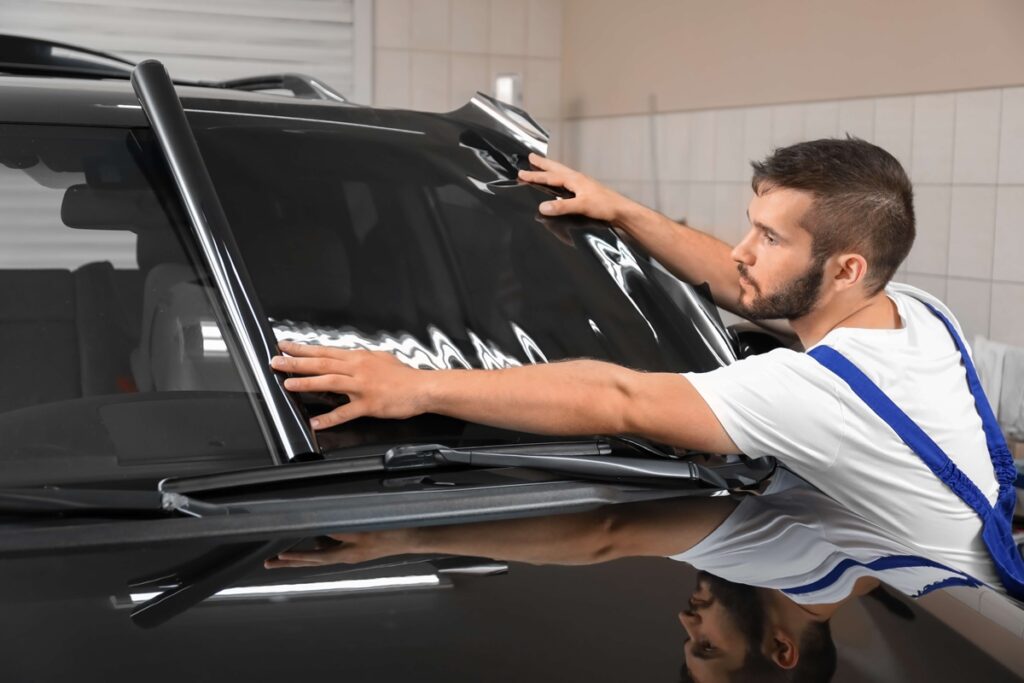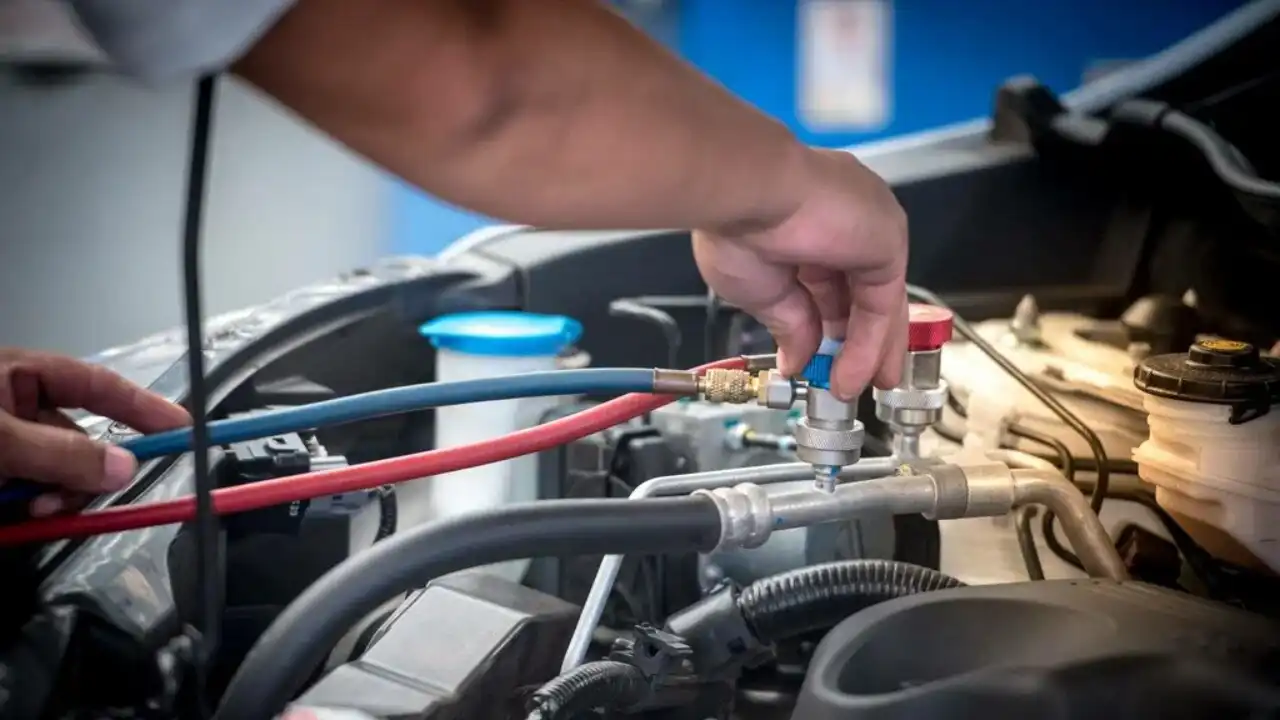Your car can stay cooler, protect the interior and people from UV rays, provide privacy, and even look better with window tint applied. Choosing the right vehicle window tint from the numerous available options may be a real challenge. In this article, we will cover the 6 different types of car window tint and what makes them special.
Dyed Window Film

Dyed window tint contains microscopic dye particles embedded into the film that help block UV rays and reduce glare. This car tinting type comes with decent heat rejection properties. Dyed films tend to be more affordable options for basic solar protection. Some pros and cons include:
Pros:
- Inexpensive
- Good UV protection
- Variety of dark tints
Cons:
- Lower heat rejection
- Can fade overtime
- Less scratch resistance
Metallized Window Film
Metalized tint gets its solar performance from an ultra-thin metallic coating rather than dyes. The metal layer helps reflect more infrared rays that produce heat. This type keeps interiors cooler while also blocking UV rays. Some pros and cons are:
Pros:
- High heat rejection
- Good UV protection
- Wide range of light-medium tints
Cons:
- More expensive
- Metal can oxidize over time
- Less visible light transmission
Carbon Window Film

Carbon tint is known for its combination of darkness, UV blocking, and heat rejection. Tiny carbon particles in the film absorb light rays extremely well. Carbon films maintain the cooler interior while also providing a very dark blackout appearance. Here are some of its pros and cons:
Pros:
- Excellent heat rejection
- Very dark tints available
- Great UV protection
Cons:
- Most expensive option
- Too dark for some state laws
- No visible light transmission
Ceramic Window Film
Ceramic tint contains non-metallic nanoparticles that reflect infrared rays for superior insulation. The ceramic layer blocks a tremendous amount of heat from entering the car. An additional dyed layer maintains the desired tint level. Pros and cons of ceramic tint:
Pros:
- Best heat rejection
- Maintains cool interiors
- Lighter tints available
Cons:
- Most expensive films
- Needs professional installation
- Slight external visual changes
Hybrid Window Film

Hybrid tint merges technologies like dyed, carbon, metalized, and ceramic particles into one film. Each layer targets specific light rays for maximum performance. Hybrids deliver exceptional heat blocking, UV protection, and visible light reduction. Here are some advantages and disadvantages:
Pros:
- Strong overall performance
- Very durable and long-lasting
- Customizable light transmission
Cons:
- Highest cost films
- Challenging do-it-yourself install
- Limited tinting options
Dual Reflective Window Film
Dual reflective film contains two metalized layers for the most effective insulation. Its double-strength construction unsurpassably blocks infrared rays to maintain cooler temperatures inside. Some pros and cons include:
Pros:
- Best heat rejection
- Ultraviolet protection
- Lighter tints available
Cons:
- Very expensive
- Professional installation required
- Metals prone to oxidation
Some Tips for Using Car Window Tints
- Choose the right tint level – Darker tints like 5% or 20% can look sleek but may be illegal in your state. Go with a lighter 35% or 50% tint if you want to stay within legal limits.
- Consider going lighter on windshield – Most states restrict windshield tint to 30-50% visibility since it can obstruct driver vision at night.
- Get professional installation – Pro installers use tools to apply the film cleanly without bubbles and debris trapped underneath. This prevents peeling or interference with driving.
- Give the new tint time to cure – It takes around 2 weeks for the moisture between the tint and glass to dry out completely. Avoid rolling down windows during this period.
- Help tint lasts longer – Blocking UV rays with film protects the interior but also leads to higher glass temperatures. Park in the shade whenever possible.
- Keep inside of windows clean – Dust, oil, and buildup degrade the adhesive over time. Use a soft microfiber cloth with window cleaner to wipe down visible window interiors.
- Don’t use ammonia or abrasive cleaners on film – If needed, specialist tint-safe cleaners and clay bar kits can remove contamination from exterior window film.
- Check local regulations on allowable visibility – Tint medical exemptions for extra darkness are required in certain medical cases.
Following these simple car window tint tips and maintenance steps will help you safely enhance privacy, cooling, and style for years to come. Let me know if you need any other specifics!
Conclusion
With many types of window tint available, you can narrow down choices based on performance needs and budget. Lower-cost dyed and metalized films still enhance privacy and block UV rays. For optimal heat blocking, carbon, ceramic, hybrid, and dual reflective films reflect the most infrared light, albeit sometimes with darker tints. With all factors considered from laws to appearance to longevity, you can select the ideal car window tint type to protect yourself while driving more safely and comfortably.
Read more: Ceramic Coating Vs Paint Protection Film






